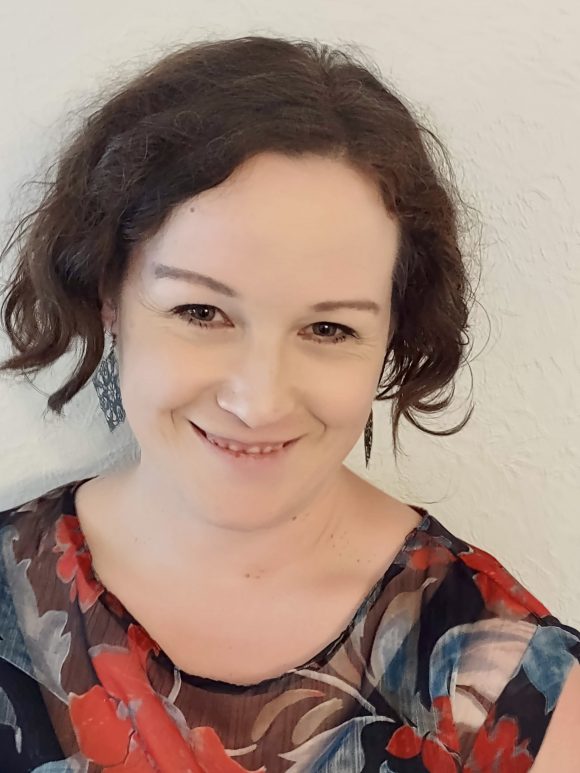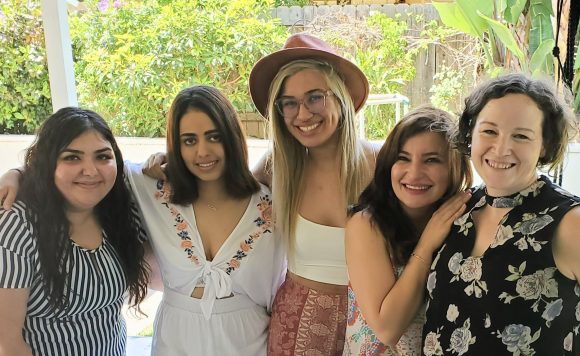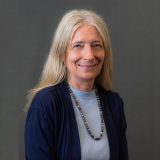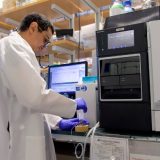Women in Leadership: Dr. Jennifer Totonchy
March 16, 2023
Since 2016, Dr. Jennifer Totonchy has dedicated herself to being an influential member of Chapman Pharmacy. Dr. Totonchy, now the Associate Dean of Research and Graduate Studies, is a trailblazer in accomplishments at CUSP, including being the first junior faculty member to be awarded an R01 grant during their time at Chapman.
 Described as “dedicated” and “limitless” by students and her peers alike, Dr. Totonchy provided some insight into her professional life, what early life experiences impacted her career trajectory, and how her research interests have pivoted since pursuing her Ph.D.
Described as “dedicated” and “limitless” by students and her peers alike, Dr. Totonchy provided some insight into her professional life, what early life experiences impacted her career trajectory, and how her research interests have pivoted since pursuing her Ph.D.
Thank you for taking the time to sit down with me and share your experience as a woman as a professional scientist and educator in the pharmaceutical industry. Let’s start off basic- Were you encouraged as a child to pursue STEM?
“When I was a child, neither of my parents had college degrees. My father worked for a computing company, so I was exposed to technology very early. This was before visual operating systems existed, so we’re talking about using command line code when I was 5 or 6 years old, and I still really enjoy using coding and computational tools in my work.
Above: Dr. Jennifer Totonchy, Associate Dean of Research and Graduate Studies
It’s neat that you were exposed to STEM so young. While your father encouraged you to play as a child with technology, did you have a woman role model in your life in your earlier years that shaped how you approach STEM?
“Oddly, all of my scientific mentors as a teenager and young adult were men. It wasn’t until after I got my Ph.D. that I developed strong relationships with female mentors. This isn’t particularly surprising given that, even today, the majority of research laboratories are run by men.”
Since most labs were, and continue to be, managed by men, how did you get involved in research?
“I remember exactly when I decided I wanted to be a researcher. It was in a high school science class, and the instructor put an eyedropper in a 2-liter bottle of water and sealed it with a balloon. Then he squeezed the sides of the bottle and the eyedropper sank to the bottom. He looked up at us all and said, ‘Why?’. We spent the next several classes asking questions that were designed to answer that ‘Why’ and it was very clear to me after that experience that this is how my mind works. Around the same time, I read the book ‘The Hot Zone’, which is about Ebola, and fell in love with viruses (yes, I know that’s weird). I joined a high school summer program and got my first taste of being in a research laboratory when I was 17, and I’ve never wanted to do anything else.”
That’s a great story. In my opinion, it’s unique to hear someone give an exact moment in time when something so internal and special was identified. If you could go back in time, what advice would you give your 25-year-old self?
“When I was 25, I’d just returned from two years as a Peace Corps volunteer in Kenya and joined the graduate school to get my Ph.D. I think the thing I took the longest to learn to value was networking. I’m an introvert who has a lot of social anxiety and really found it hard to talk to people at scientific meetings. I would tell her to work on that social anxiety sooner rather than later.”
You’ve always worked on herpesviruses and were even a keynote speaker at the 44th Annual International Herpesvirus Workshop (IHW) in 2019. I did a little digging and found that your PhD-self swore to never work on herpesvirus ‘entry’, but now one of your R01 awards is to study entry. What changed?
“Presenting at IHW was a huge step in my career. In 2018, the conference organizers were aggressively criticized for having all-male keynote speakers, so in 2019 they made a conscious effort to invite not only women but women who were relatively early in their careers. I had to beg my doctor to let me travel because I was 34 weeks pregnant at the time of the conference. I am a little embarrassed to be working on entry after criticizing it for so many years. It’s hard and complicated and I still don’t like it, but we have to know how viruses enter cells in order to be able to develop vaccines. The dream of helping make a vaccine that prevents the cancers caused by KSHV gets me through the hard work of trying to understand entry.”
Has the culture surrounding women in the industry changed since you entered? Have you seen a rise in women in management, administration, or other leadership opportunities?
“Women have caught up in some ways in that we are getting PhD degrees in life sciences at similar rates and doing postdoctoral training. However, far fewer women manage to get tenure track faculty positions where they run their own research lab, so we are getting the education and training but still not reaching the leadership positions in my field at the same rate as our male counterparts.”
Below: Dr. Totonchy with some of her female graduate student mentees
Hm, that’s interesting to hear about the unequal balances in education versus their outcomes. It’s a great step forward to equalize education interest and opportunity, but it’s clear that women are systematically less likely to obtain leadership positions. How can we change that, and what would you like to see improved in the future?
“In my opinion, the problem is almost entirely due to conflicting cultural demands on women. There is a culture that persists of women carrying the majority burden for household and childcare responsibilities, even if they are employed full-time. There is also the culture in the life sciences that if you are going to be successful as an independent scientist, the job must own all your time and attention. Many women who want to have families think that means they have to give up on their scientific career because the two goals are not compatible.
The solution to having more women succeed as leaders in STEM comes down to changing both of those cultures. I think the best way to go about that is through advocacy and representation.
Women scientists who have managed to step into leadership without sacrificing their desire for a family need to be visible, proud of both of those roles and open about the challenges they face and how they navigate them. The students and trainees need to see that it is an achievable goal and that those who have managed it aren’t just outliers. We need to own our struggles and the barriers we’ve faced so we can advocate for changes in the culture of the scientific community, so the next generation doesn’t have to face those same challenges. We need to build up more workplaces that are like CUSP in their authentic support of faculty work-life balance.”



